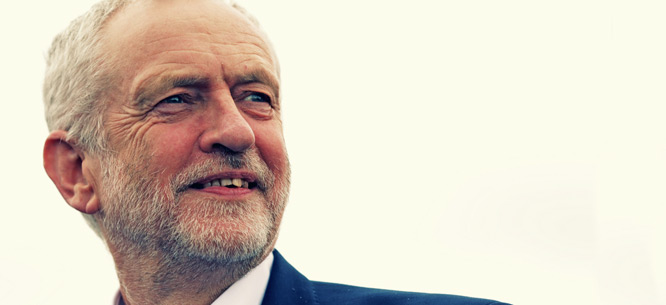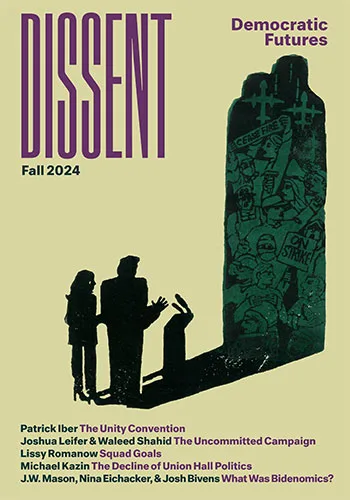How Did Labour Do It?
How Did Labour Do It?
Putting both the Conservatives and the pundit class to shame, Labour’s impressive gains in yesterday’s election show that a left alternative is still possible.

The British public were warned time and again: a vote for Jeremy Corbyn is a vote for economic ruin. For a Marxist extremist. A terrorist sympathizer and friend of the IRA, Hamas, and Hezbollah. A flailing political dinosaur with no power to convince the electorate to back him. When Theresa May called a snap election, she told the public she needed an increased majority as a mandate to secure a strong Brexit deal when she left for Brussels. She told Conservative members of Parliament she’d deliver a landslide and leave Labour battered and slumped at the ballot box.
The media, and politicians in May’s party and even within Corbyn’s Labour said he couldn’t win seats: the idea was laughable. But now, the day after polling day, with fewer than two weeks until Brexit negotiations commence, parliament is hung, with the Conservatives having lost twelve seats and Labour having gained twenty-nine. After promising her party she’d consign Corbyn to history and strengthen their position, May has spent seven weeks and millions of pounds in donations in a campaign that has ended in utter humiliation. Corbyn has shown that contrary to the perceived wisdom of the pundit class, the country hasn’t shifted stubbornly to the right.
Anti-Corbyn pundits began spinning the result before the polls even opened. If Corbyn did well in any seats, it was due to May’s weakness, not Corbyn’s strength. It’s true that May’s campaign was a shambles: she U-turned on social care for the elderly, after a manifesto pledge to sell the equity within your home to fund your care while you were alive. Labour called it the Dementia Tax, pointing out how it would hit people with long-term illnesses far harder than those suffering from shorter physical ailments. The pledge became toxic, and was dropped within four days. After May refused to appear on TV to debate the other leaders head-to-head, Corbyn announced at the last minute he’d attend, challenging May to do the same. May refused, sending a colleague in her stead. May appeared visibly shaken when asked to explain why she wouldn’t participate, and canceled media appearances for two days. It was a masterstroke from Corbyn’s team: at the debate, every leader and several audience members attacked May for her no-show. Yet if you listened to most commentators, you’d be told May was weak, and her gaffes were not prompted by Corbyn’s dogged campaigning, but unhappy chance.
But why would you listen to the commentariat? They have failed categorically to both predict and understand the rise of Corbynism. Time and again, the public were told Corbyn would fail when it came to electability, as though it were a concrete rather than abstract term, and that the electorate were predictable when elections in the previous two years had upended expectations of pollsters, politicians, and commentators alike. Instead, despite starting at 26 percent in the polls on the day the election was called, 17 points behind the Tories, on polling day Labour seized 40 percent of the vote, to the Conservative’s 42 percent.
Such gains are unprecedented in a modern election: the one pollster that accurately predicted the result, YouGov, was dismissed as an outlier, and “irresponsible” by many. How did Labour do it? By aping Bernie Sanders’s tactics: mobilizing the youth vote with a huge grassroots campaigning operation enabled through social media, and a manifesto centered on hope and solidarity. For decades, parties had accepted that the electorate was stable: those who didn’t vote were unreachable, the young wouldn’t turn out, and the old could be relied upon. To win, therefore, politicians had to persuade swing voters to back them, and so triangulated policies, imitating each other in an attempt to poach each others’ voters. The Corbyn campaign instead went heavily for the youth vote, encouraging a mass registration drive, deliberately targeting young people with policies including free university education, better funding for arts and youth clubs, and health and housing. Popular grime artists like Stormzy have publicly voiced support for Corbyn and during the campaign others including JME and Akala encouraged fans and Twitter followers to register, vote, and campaign. Momentum, the Corbyn-supporting grassroots organization that emerged to harness the energy behind his leadership campaign set up a website to encourage car-sharing trips to marginal seats, and ran trainings on canvassing and campaigning for young people who wanted to get the vote out. Seats such as Croydon Central were flooded with eager young campaigners, which Tories lost as a result.
But the Labour manifesto was the key component in Labour’s historic performance. Post-Blair, Labour and the Conservatives grew increasingly similar. Both parties supported austerity, privatization, and tuition fee hikes, and adopted a “tough” stance on social security and benefits for those in poverty. The political narrative accepted that socialism was dead, a relic consigned to the past, while neoliberalism was unimpeachable, the natural order of things. Corbyn’s Labour understood that most people want good schools, well-run local services, and feel privatization has harmed rather than improved infrastructure and utilities. Many newspapers openly mocked Labour’s promise to renationalize railways and end tuition fees, and attacked Corbyn’s suggestion that foreign policy decisions can make us more vulnerable to terrorism. After the Brexit vote and Trump’s victory, many journalists decried the left for existing within echo chambers, refusing to listen to other points of view and thus assuming certain opinions are widely held, when they are far from dominant. Yet on nationalization and foreign policy, it turned out the public agreed with Corbyn and disagreed with May and the commentariat. Polls repeatedly showed the public trusted Labour’s policies and agreed their manifesto was the most likely to deliver security for their family.
Blair, Brown, and Miliband all balked at socialism, assuming the 1997 victory meant Labour could only win by appealing to the center. But after that peak, Labour’s share of the popular vote began to slip away, until in 2010 they lost an election to the Conservatives. Corbyn’s party didn’t win enough seats yesterday to beat the Tories, but he did succeed in upending expectations of Labour, stripping away May’s majority in an election that by all accounts should have delivered a landslide. He did it by offering hope, and a more inclusive vision of society: socialism, painstakingly costed and budgeted. And in doing so won he back voters who had abandoned Labour, and more importantly, brought in a whole new generation of young voters, enthused and excited about joining a movement.
Dawn Foster is a London-based writer on politics, social affairs, and economics, and the author of Lean Out (2016, Repeater).




